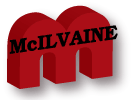
CATER Mask
Decisions
February 3, 2021
Three Step Mask Strategy Webinar Friday Feb 5 at
10:AM CST will Address a Market Five Times
Larger than the Present One
The U.S. Tight Fitting Mask Market is Five Times Higher Than the Present One
TAIJI Medical Supplies Single-Use Face Masks
Designed to be Protective and Comfortable
Behind the KandyMask Micro Filter System
Mask Shortages Continue for Medical Workers
____________________________________________________________________________
Three Step Mask Strategy Webinar Friday Feb 5 at
10:AM CST will Address a Market Five Times
Larger than the Present One
We need a program to insure that everyone is
fitted with tight fitting efficient masks as
quickly as possible. This is a new market
involving 97% of the people who will need
84% of the masks Distinguished researchers have
developed a three step plan which we will
be discussing on Friday.
On the 28th we covered the background
for Step 1 of the Friday webinar. Monday we
covered Step 2 and Tuesday Step 3.
The three steps are (l) launching an awareness
blitz, (2) advise on which masks should be worn
and (3) prioritize masks for the vulnerable.
View the previous Alerts at
http://www.mcilvainecompany.com/CATER/subscriber/default.htm
The webinar will include a display and
discussion of the three steps. We are
encouraging input from all the participants and
hope for a lively discussion and debate.
The U.S. Tight Fitting Mask Market is Five Times
Higher Than the Present One
McIlvaine is analyzing the potential market if
everyone is equipped with tight fitting
efficient masks.
At this stage it can be said that this
market is at least five times larger than the
one being served.
The U.S. population is 331 million people. The
question is how many masks will it take to
insure safety for all citizens.
Nearly 20 million are less than 4 years
old. Over 50 million are in kindergarten through
high school.
Over 20 million people are in healthcare and
social assistance.
The number of doctors is less than 1
million. There are 2.8 million people in
nursing.
Some of these people are wearing 10 surgical
masks per day or several N95s.
But the maximum consumption is by people
within three feet of infectious patients.
Many people are not in contact with
patients on a daily basis.
DHHS estimated that 3 billion masks would be
needed to fight COVID in March.
this would supply 3 million people
wearing 3 masks per day for one year.
There are over 1 million firefighters but only
400,000 of them are permanent and the others are
volunteer. There are 800,000 law enforcement
officials.
|
Age group |
Data Type |
2015 |
2016 |
2017 |
2018 |
|
0 to 4 |
Number |
19,918,078 |
19,921,759 |
19,890,972 |
19,762,962 |
|
Percent |
27% |
27% |
27% |
27% |
|
|
5 to 11 |
Number |
28,722,259 |
28,710,158 |
28,655,926 |
28,570,534 |
|
Percent |
39% |
39% |
39% |
39% |
|
|
12 to 14 |
Number |
12,358,887 |
12,345,395 |
12,421,214 |
12,486,380 |
|
Percent |
17% |
17% |
17% |
17% |
|
|
15 to 17 |
Number |
12,618,827 |
12,672,101 |
12,617,234 |
12,499,269 |
|
Percent |
17% |
17% |
17% |
17% |
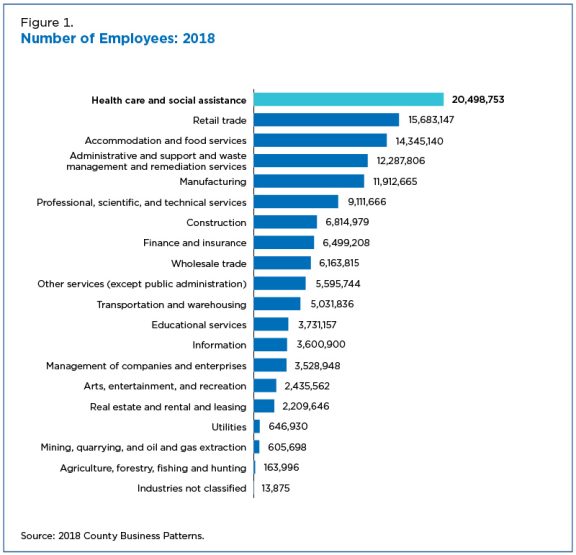
Many in the population are not employed and
spend relatively little time in public. Possibly
8 million of the 16 million people in retail are
meeting with customers continually.
There are 14 million in accommodations and food
service. But it is likely that only a few
million would be in contact with many clients
each day.
The McIlvaine Company will be analyzing all
these categories and make forecasts in terms of
tight fitting and efficient masks. But the
analysis is likely to show that the present
market for medical workers is only 16% of the
total. The most exposed group uses 15 times as
many masks as the least exposed group
but only represents 3% of the population.
So the challenge is supplying the other 84% of
the expanded market.
This is a high efficiency market five
times larger than the present one.
|
Number of People
millions |
Mask Ratio |
Number of masks
in equivalent
period |
% |
|
10 |
15 |
150 |
24 |
|
50 |
5 |
250 |
39 |
|
240 |
1 |
240 |
37 |
|
30 |
0 |
0 |
0 |
|
330 |
|
640 |
100 |
TAIJI Medical Supplies Single-Use Face Masks
Designed to be Protective and Comfortable
TMS occupies a 120,000 sq ft facility in
Lincolnton, NC that is already producing
volumes of masks and will scale to millions.
Masks can be made for nearly the same price as
those made in China. TMS believes America should
not have to choose between quality and price in
a time of need.
·
TMS has two (2) melt-blown fabric machines
in-house. Melt-blown fabric is the center layer
of each mask and is what provides filtration.
Many manufacturers were hindered during the
height of the pandemic as they rely on sourcing
from overseas.
·
The company says it has combined automation,
vertical integration and American ingenuity to
solve the problem
· Medical-grade surgical and protective face masks are designed, developed and produced end-to-end in America (Lincolnton, NC).
· 20 fully-automated assembly lines can produce thousands of masks per minute.
·
Vertically integrated factory takes raw
polypropylene and transforms it into surgical
and protective face masks in seconds.
The general Consumer Series single-use face
masks are designed to provide enhanced coverage
with a more comfortable fit. They are wider than
the average mask, reducing the gap between the
edge of the mask and the ears. The nose bridge
is built with higher ductility, allowing it to
bend more easily and stay in place without
discomfort. The ear loops on their masks are
created with a thicker, more comfortable
material that has been tested to stretch to
two-and-a-half times the original length without
losing elasticity.
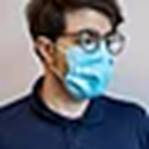
Mask Specifications
·
Engineered with three (3) layers of protection
·
Hypo-allergenic, soft, non-woven polypropylene
outer layers
·
Melt-blown proprietary material inner layer for
improved filtration
·
Latex free
·
Single-use
·
6.9 in ± 0.2 in (Length) x 3.5 ± 0.2 in (Width)
·
Made in Lincolnton, North Carolina
Dan Grayson, VP Sales and Marketing agrees that
there is a need for a tight fitting mask but
believes there are ways to accomplish this
without use of a brace. He will be traveling on
Friday and unable to participate in the webinar
but believes that TMS can play an important role
in seeing that everyone has tight fitting
efficient masks. Here are his comments.
“The pandemic has created a whole new twist on
the meaning of ‘start-up’ endeavors here in the
United States and globally as a whole. As the
Director of Sales & Marketing for TAIJI Medical,
I can speak firsthand regarding the struggles
and successes of an American-based face mask
manufacturer. From $0 sales, to now over 100
healthcare customers, twq massive distribution
partners and a top major retailer under our
umbrella, it’s been an overload of planning and
strategy. But, at least in our case, the
strategy is paying off.
Defining the Industry
The one word that’s beginning to look like it
will define the entire face mask industry in the
United States is “capacity”. As demand increases
for now, it will stabilize over time when the
pandemic spread slows. One then has to ask
themselves, “did I position my efforts for
long-term stability or did I just fill a void”.
That’s a scary question that I don’t believe
many new mask manufacturers have given much
thought.
The ability to continue, after the pandemic
subsides will be based upon the ability to
manufacture and ship large volume orders at
almost import pricing. This especially rings
true if the new manufacturer wants a shot at a
government contract or partnering with a large
distribution source, a GPO or IDN.
A National Masking Strategy?
There is simply no “national strategy” for
masking and that’s the problem. The just “wear
anything over one’s nose and mouth” strategy
that has been disseminated, by many government
officials and even doctors, has not played-out
well for the past nine months. It’s simply not a
strategy, rather a “hail Mary” attempt at their
meaning of “mask compliance”.
I’ve seen a lot of mask manufacturers now add
the manufacture of N95 or similar respirators to
their capabilities. Some others have added the
manufacture of cloth masks, which while having a
more “stylish” appearance than that of a
surgical mask or respirator, offer inefficient
bacterial and particulate filtration. Some
companies are even offering a “brace” for
regular and surgical face masks in an attempt to
make them more like a respirator.
I believe that a superior quality surgical mask
offers a great level of protection as the
Bacterial and Particulate Filtration
Efficiencies are superior to that of a
respirator or cloth mask. If one combines a face
shield with the surgical mask, well, that would
only serve to increase the level of protection.
The concern with any traditional surgical mask
is the seal around the mouth and nose areas. Our
company believes that can be overcome to make
the surgical mask the best overall masking
choice.
Buy American but “Economically Forced” to Buy
Imports
Along with a “national strategy” has to come a
reasonable price point for surgical masks and
respirators being manufactured domestically.
Potential buying sources and users of these
masks must realize that American-made products
cost slightly more. It’s a combination of
superior quality, increased material and labor
costs that drive-up the per piece price.
One of the biggest issues that I have seen is
government entities, whether state or federal,
list a Request for Pricing (bid) for millions of
masks and then award the bid contract to the
lowest bidder. Do they not realize in today’s
world that most likely the mask that will be
provided will be an inferior imported mask
supplied by an entity that is not a mask
manufacturer or specialist? I’ve literally seen
a large (5,000,000 masks) bid opportunity
awarded to “Joe’s Body Shop” at 4.5 cents per
mask. There need to be established rules on
these bid requests that the bidder has to be an
actual mask manufacturer or long-time supplier /
distributor as part of the qualifications to
bid.
Another great example is that healthcare
facilities want to buy from U.S. PPE
manufacturers. But, because of “economics”, they
are forced to buy imported masks. Their budgets
have been overloaded from buying PPE and the
last thing they can afford to do is to
completely short-circuit their budget by
purchasing masks, gowns, etc. that have a higher
per piece price. In fact, some healthcare
facilities are now directly sourcing their PPE
from China, Thailand and Vietnam in an attempt
to get the lowest price. Again, they want
to “Buy American” but are forced to
purchase elsewhere.
The Solutions
I can say this with great confidence. U.S. mask
manufacturers will have to find a way to
successfully (and quickly) increase their
capacity while driving down the cost of each
item of PPE to a point where they are slightly
above an imported item's landed cost. The
manufacturers that can do this will survive.
Those that cannot will have to wait until
there’s another national emergency in order to
capitalize. And, in the end, we all hope that
doesn’t occur again.
In the end, it's all about the mask, the comfort
and the associated filtration capabilities that
offer protection. At TAIJI, we have developed a
more well-fitting and comfortable Class 2
surgical mask that can also be offered to the
general public. We have the innovation and
capacity to put the residents here in
American-made masks.
Behind the KandyMask Micro Filter System
1st Layer: A
high thread count microfiber which acts as a
pre-filter for large particles and helps extend
the life of our inner micro filter layers.
2nd Layer:
A thin activated carbon material that filters
out PM 2.5 particles, light gases and chemicals.
3rd Layer: 2
stacked layers of our proprietary melt blown
polypropylene blend tested to filter microscopic
airborne contaminants between 0.3 and 0.075
microns.
4th Layer:
Is the soft microfiber inner layer making
KandyMask comfortable to wear for long periods
of time.
The filtration results conform with ASTM F2100
medical mask standards on these tests below.
* 99.80% Viral Filtration Efficiency
* 99.76% Bacterial Filtration Efficiency
* 97.14% Particle Filtration Efficiency @
0.075 to 0.26 micron (yes, that is 10-25 times
smaller than PM2.5)
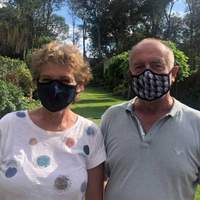
The company uses
GB, Underwriters Laboratory and Nelson
Labs for testing.
Choosing the right mask size is important for
good filtration and comfort.
All the KandyMask models come in four sizes.
Height is used as a method to choose the right
size mask size. In all our years of being in the
protective mask space, we have found that
it works for about 95% of people. The 5% usually
have longer or shorter faces from nose to chin.
If you feel you are in this 5% you should
potentially choose one size up or one size
down. We are also aware that everyone comes in
different shapes and sizes so it's important to
layout actual measurements for you to make an
informed decision.
Below is the mask size and measurement for our KandyMask
6.0 model.
1. For the height of the mask, measure from
the bridge of your nose down to the right under
the chin. It is actually good to measure
about 2cm / 0.7inc under your chin for a more
accurate fit because the bottom of the mask
tucks slightly under your chin.
2. For the width of the mask, measure from
your left cheekbone to your right cheekbone.
This measurement rarely has an effect on the
wearer and is not always necessary unless you
have skinnier or heavier set facial features.
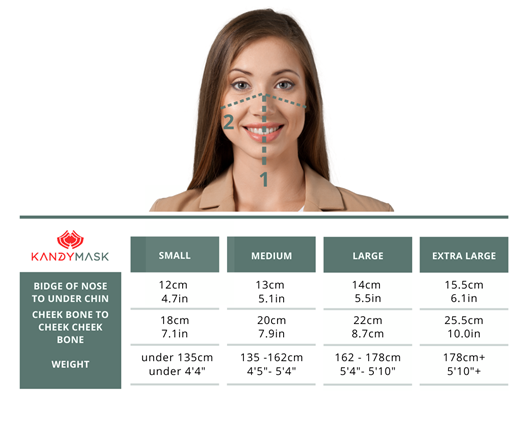
Mask Shortages Continue for Medical Workers
The initial shortage has eased, but there still
aren’t enough medical masks for health-care
workers, let alone others. Demand for N95s is
500 to 1,000 percent higher than it was a year
ago, said Megan Ranney, co-founder of Get Us
PPE, which helps front-line workers obtain
personal protective equipment
Even many health-care workers at well-financed
hospitals wear N95s for anywhere from a day to a
month, instead of changing them in between
patients like they did before the pandemic.
Smaller facilities are struggling even more,
Ranney said. Some are relying on KN95s, a
Chinese equivalent that U.S. health-care workers
consider less desirable.
N95s, which once cost $1 or less each, now sell for up to $5. And for both N95s and KN95s, a surge of fraudulent or faulty products on the market has sometimes made identifying high-quality options difficult.
“Everyone is cutting corners,” Ranney said.
“There is no health-care facility in the country
that is using PPE the way that it did
pre-pandemic.”
Why is there still a shortage?
Both the market for N95 masks and the national
stockpile were small before the pandemic. The
U.S. imported at least half of its PPE,
including medical masks, from China, where
exports shrank for months because of the
outbreak, said Scott Paul, president of the
Alliance for American Manufacturing, a nonprofit
organization that advocates for public policies
to benefit U.S. manufacturers.
Major suppliers such as 3M and Honeywell
dramatically increased production last spring
and summer but didn’t come close to the 3.5
billion masks that federal officials estimated
were needed to fight the virus. Barriers to
entry, including uncertainty about demand
post-pandemic, discouraged other companies from
entering the market, Paul said.
The N95 shortage America can’t seem to fix
The Trump administration took a relatively
hands-off approach in encouraging the production
of N95s. Federal officials arranged contracts
with manufacturers, but the president mostly
avoided using the Korean War-era Defense
Production Act to compel companies to make
masks.
“I think it’s fair to say that there were some
efforts,” Paul said, “but those fell short, as
well-intentioned as they may be.”
How can I tell if a medical mask is high
quality?
Unlike N95 masks, KN95s are easy to find through
online retailers, major chain stores and
pharmacies.
If you’re going to buy KN95s, choose a type that
has received emergency use authorization from
the Food and Drug Administration, said Anne
Miller, executive director of Project N95, a
nonprofit organization that helps health-care
and other essential workers access protective
gear. The FDA keeps a
list of approved products,
which the agency refers to as “respirator models
manufactured in China.”
The Centers for Disease Control and Prevention’s
National Institute for Occupational Safety and
Health also maintains
a website focused
on counterfeit N95s for reference.
Whatever face covering you choose, it should be
snug and without gaps.
If I buy medical masks, am I taking them away
from health-care workers?
It’s not clear whether buying N95s on the open
market affects the supply available to doctors
and nurses, whose contact with coronavirus patients
puts them at heightened risk of infection.
Health-care facilities don’t usually get N95s
from the retailers where an everyday shopper
might buy them, said Tom Frieden, former
director of the CDC.
Ranney cautioned that while shortages persist,
there’s no way to guarantee that buying an N95
doesn’t mean one fewer mask for a doctor.
Instead, she suggested choosing KN95s or KF94s,
a Korean-made equivalent.
Do other countries have enough N95s?
Several countries have made N95s or their
equivalents widely available to the public.
The South Korean government seized control of
KF94 production and sends masks to pharmacies to
sell at a set price. Singapore has offered free
reusable masks in vending machines. Hong Kong
residents can pick up masks at post offices.
In Europe, medical masks are now widely
available at pharmacies. Austrian grocery
stores distributed free masks last month after
the government mandated them in stores and on
public transportation.
Europe’s growing mask ask: Ditch the cloth ones
for medical-grade coverings
Germany launched a $3 billion program in
December to give three free medical masks to
older people and those with preexisting health
conditions — about one-third of the population.
The southern state of Bavaria recently made N95
equivalents mandatory in some public settings.
Will the U.S. supply of these masks increase?
Although President Biden signed an executive
order last month expressing a need to develop a
sustainable supply chain for protective gear,
his administration has not released a specific
plan to increase manufacturing. White House
press secretary Jen Psaki has suggested that any
additional supply would be directed toward
health-care workers involved in the vaccination
effort.
Biden’s stimulus proposal also requested $30
billion for “supplies and protective gear,” but
Congress has yet to reach a deal.
Ensuring greater access to medical masks, for
health-care workers and others, should be a
critical part of the U.S. response as the more
highly transmissible variants threaten to
reverse declining infections, said Abraar Karan,
a doctor at Brigham and Women’s Hospital and
Harvard Medical School.
“As the virus gets better,” he said, “we need to
get better in our response.”
